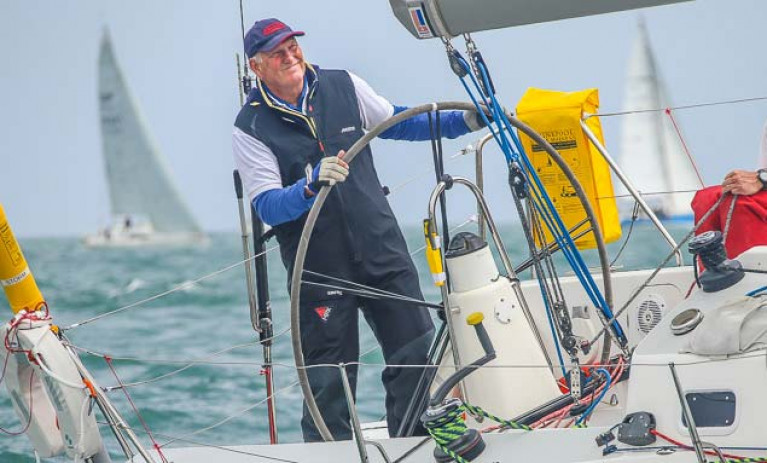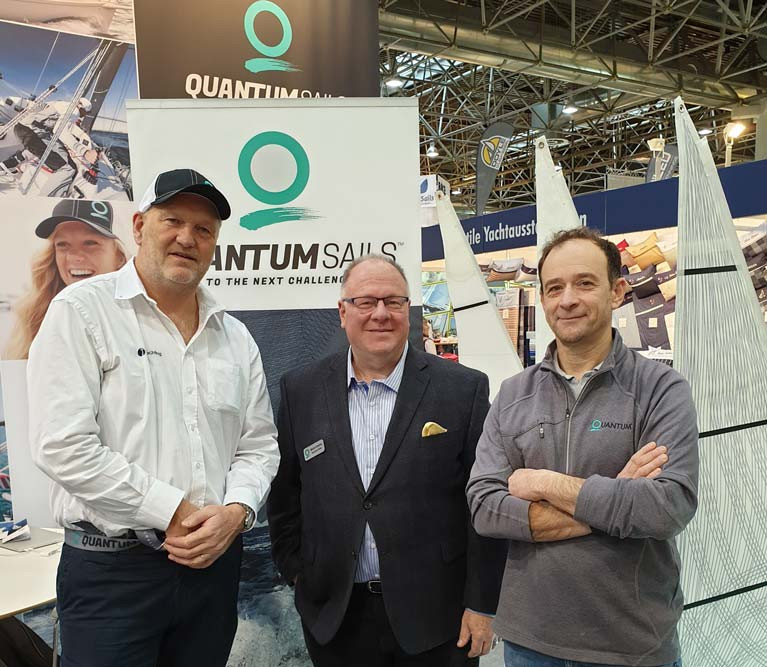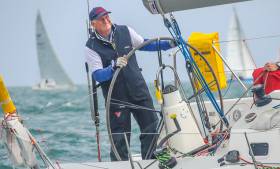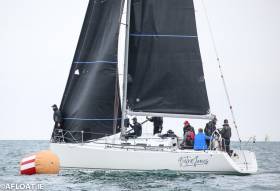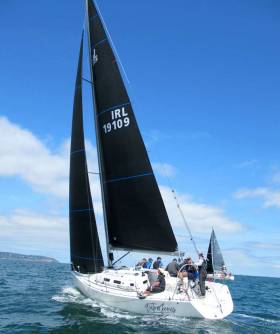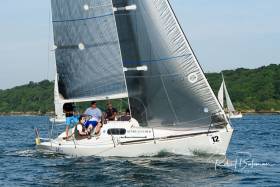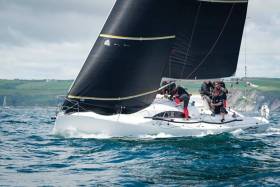Displaying items by tag: Mark Mansfield
Schull Based Nautitech 46 is a Southampton Show Star as High Demand for Key Yachting Brands Reported
Mark Mansfield, Key Yachting agent for Ireland, reports very high interest levels in the four yachts on show at Southampton Boat Show from Key Yachting's four different brands.
Key Yachting is the agent for J Boats, Grand Soleil, Nautitech Catamarans and Tofinou dayboats.
On display is the Nautitech 46 Catamaran, sold this year to an Irish client, and is based in Schull, West Cork (see photo above).
The featured Grand Soleil 42LC in Southampton is a long-distance comfortable cruiser.
The J/99 from J Boats is similar to the winning Sovereigns Cup J/99, Snapshot.
Finally, Key Yachting is also exhibiting the beautiful Tofinou 10 daysailer.
The show concludes next Sunday, so there is still time for Interested Irish clients to fly over and book a visit on one of these models listed above.
For further information on the above or any of the Key Yachting ranges, contact Mark Mansfield at [email protected] or 00353 87 2506838.
Following on from the excellent showing in the Dun Laoghaire to Dingle race, The Grand Soleil and J Boats brands have again displayed their racing prowess by winning the Sovereigns Cup Overall, coming first and second in the Largest IRC Class—Coastal, and finishing in all three podium position in the hotly contested Class 1.
As previously reported, The Dun Laoghaire to Dingle race was won by the Grand Soleil 40, Nieulargo, owned by the Murphy Family from RCYC, who also took Class 1. All class two podium positions were taken by either Grand Soleil or J Boat models. The J/99 Juggerknot 2, owned by Andrew Algeo from the RIYC, took the class win.
Roll on two weeks, and many of the Dun Laoghaire to Dingle boats were again in action at the O'Leary Insurances Sovereigns Cup. The two big classes were Coastal which had 17 entries, and Class 1, with 13 entries.
In IRC Coastal Class, first, second (joint) and third on the Dun Laoghaire to Dingle Race were competing. Also competing was Bob Rendell's new Grand Soleil 44, Samatom, which raced with cruising headsails in the D2D race. For Sovereigns Cup, she had her new racing headsails. A very tight regatta in varying conditions over the four days brought very close racing, with the results going down to the wire.
In the end, Bob Rendell's Grand Soleil 44, Samatom, from Howth Yacht Club, with Key Yachting Irish Agent Mark Mansfield calling tactics, took the class win by 1 point, counting a first and 2 seconds.
Second overall was the Murphy Family's Grand Soleil 40, Nieulargo. The one-off Ker 37, Jump Juice, rounded off the podium.
 The Grand Soleil 40, Nieulargo, owned by the Murphy Family from RCYC, took second in IRC Coastal Photo: Bob Bateman
The Grand Soleil 40, Nieulargo, owned by the Murphy Family from RCYC, took second in IRC Coastal Photo: Bob Bateman
In Class one, 10 x J 109's and a new J99 went head to head. Mike and Richard Evans new J/99 Snapshot got the better of all 10 x J/109's to take the class win by 9 points and, in so doing, was also awarded the overall Sovereigns cup as the top IRC performer of the regatta. Second overall was the J/109, Artful Dodger from the home club, recently purchased through Key Yachting brokerage by Finbarr O'Regan.
A great result in his first big regatta. Third overall was the J/109 Storm owned by Pat Kelly from Howth.
 In her first regatta, Richard and Mike Evans new J/99 Snapshot, Winner Class 1 IRC and Overall winner of the Sovereigns Cup Photo: Bob Bateman
In her first regatta, Richard and Mike Evans new J/99 Snapshot, Winner Class 1 IRC and Overall winner of the Sovereigns Cup Photo: Bob Bateman
If you want to compete at the top end of IRC racing in Ireland, look no further than the Grand Soleil and J/Boats models. Not only are they fast, but they are also very comfortable and are true cruiser racers. Key Yachting is also the agent for Nautitech Catamarans and Tofinou dayboats.
For further information on any of the Key Yachting brands in Ireland, contact Irish Agent for Key Yachting, Mark Mansfield, at [email protected] or 087 2506838.
Top Five Articles From Quantum Sails: Solo, Recuts, Graphics, Family Sailing & Code 0s
What better way to get excited for what 2021 has in store by taking a look back at our favourite articles from 2020.
The top five articles from Quantum Sails sites are listed below. They cover a range of useful topics including solo sailing, with our own Yannick Lemonnier from Quantum Sails Ireland.
Other articles cover sail recuts, custom graphics, family sailing and Code 0 use.
For all your sail needs for 2021, be sure to contact us for some advice or a quote. Contact details below for Mark Mansfield and Yannick Lemonnier from Quantum Sails Ireland
1. SOLO SAILING
Short-handed sailing played a big role in many adventures this year, from cruising with a partner to racing single-handed around the world. Quantum's Yannick Lemonnier shares his expertise, tips, and tricks. Getting started with your short-handed sailing here.
2. RECUTS
Are you having a hard time pointing? Overpowered due to stretched or bagged out sails? Precision recuts extend the life of your sails, and now is the perfect time to learn about the process or schedule service.
What You Need to Know About Recuts here
3. CUSTOM GRAPHICS
Make a statement in 2021! Custom sail graphics can be applied to any new or old, upwind or downwind sail, no matter if they're Dacron, nylon, or Quantum Fusion M. Check out the article below to learn how simple the process is and for some inspiration when creating your own design! Custom Sail Graphics are Easier & Cheaper than you think here
4. FAMILY SAILING
Now is the perfect time to plan your 2021 adventures. Here are some reminders to help keep it fun and create lasting memories while sailing with your family. Sailing as a Family here
5. CODE ZERO
Code Zeros are all the rave, and for good reason. They're easy to control, extremely useful, practical, and available for both racers and cruisers. Quantum's Dave Flynn gives insight and details why these sails should be part of your sail plan. Code Zero: Light-Air, Close-Reaching Powerhouse Sail here
For further information contact:
Mark Mansfield [email protected] ph 00 353 87 250 6838
Yannick Lemonnier [email protected] Ph 00 353 87 628 9854
Why Quantum Sails?
Mark Mansfield, four-time Olympian, professional sailor/coach and J Boats and Grand Soleil agent for Ireland, outlines why he has decided to link up as an agent for Quantum Sails.
I was recently appointed the Irish agent for J Boats and Grand Soleil Yachts in Ireland so adding a sailmaker agency to my armoury was a natural addition. I looked at various options and in the end, I went with Quantum because:
- GREAT PRODUCTS
- PRICED VERY COMPETITIVELY
- LINK UP WITH WELL KNOWN OFFSHORE SAILOR, YANNICK LEMONNIER FROM GALWAY, WHO HAS HIS OWN SAIL LOFT, WEST SAILS.
PRODUCTS
I am a little biased, in that I chose Quantum sails in three of my four Olympic campaigns, but these were Dacron one-design sails. Quantum has also been one of the major big boat sailmakers for many years.
Their Top range Fusion Technology can be seen in such boats as:
- Quantum TP 52—Consistently the top Tp 52 in the Ultra competitive TP52 circuit.
- American Magic—Foiling US Americas Cup Challenger from the New York Yacht Club
- Swan 36—Chose Quantum to design the first sails for this new exciting class, as did the Dehler 30 one-design class.
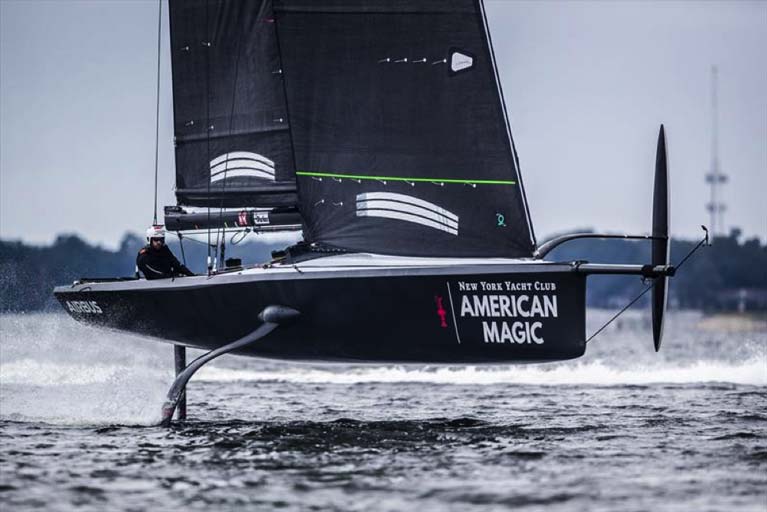 American Magic—Foiling US Americas Cup Challenger
American Magic—Foiling US Americas Cup Challenger
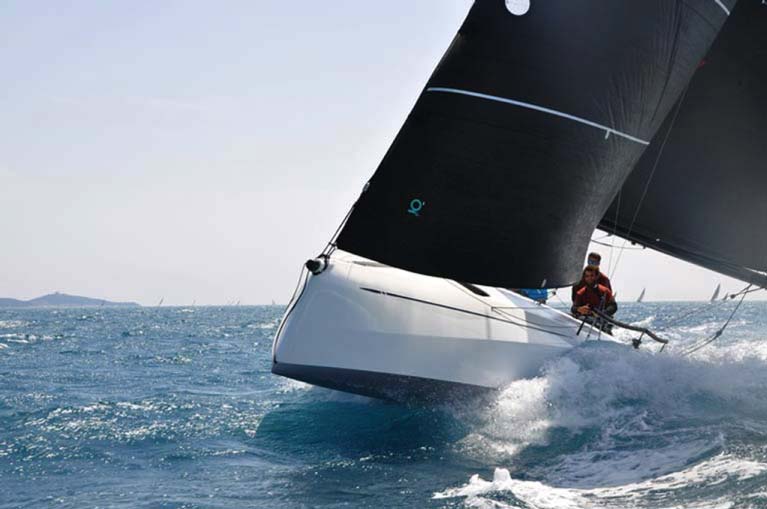 Swan 36
Swan 36
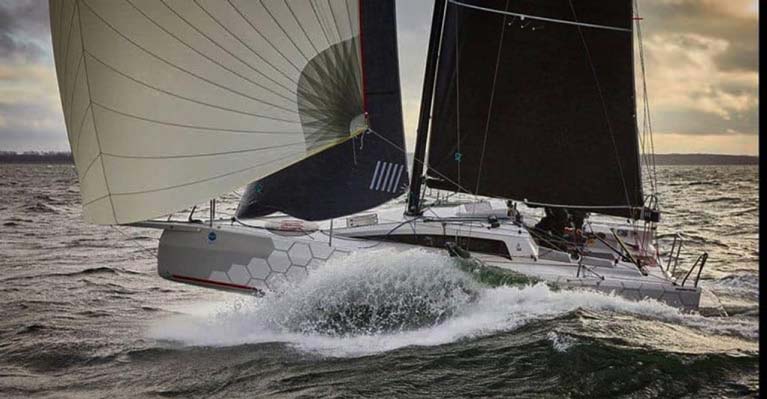 Dehler 30 OD
Dehler 30 OD
They all use Fusion MR Technology product, which are membrane sails designed and built specifically for a particular boat. This product can be had with, Carbon Strengthening Threads—Fusion 7000 series—generally used at the top racing level and needed for boats over about 33 feet to keep the sails from stretching.
Aramid (Kevlar) Strengthening Threads—Fusion 5000 series—Generally used at a top level for racing and needed for boats between about 28 to 33 feet to keep the sails from Stretching.
We then also have our Tri Radial product, which uses laminated sailcloth with various Strengths (some Carbon, some Aramid, some Polyester), constructed in load-bearing tri-radial designs. These sails are perfect for the club racing level sailor, who wants a quality product, which will last, at a more affordable price level.
PRICE
I priced sails with other sailmaking brands in the 30 foot, 35 foot and 40-foot range and consistently Quantum came out the most competitive for both their Top range Grand Prix Fusion MR products and also their Step down Club racing sails.
I believe in Ireland Owners are generally unhappy about the high pricing levels for sails, which have seemed to increase right through the recession at a level not seen in any other products.
Clients should remember if they are getting quotes for sails, that the quotes they receive have the same base structural strengthening material (Carbon/Aramid/Polyester) as the other sailmaker. Just because a sail has a fancy badge, has a fancy brand name and is black, that doesn’t mean it is the correct sail for the boat and is strong enough. Often sailmakers, especially if they are in competition with another sailmaker, will quote on a sail that looks fancy, but the internal load-bearing material (maybe Polyester instead of Carbon) is not going to stop stretch and so will have a much shorter competitive life.
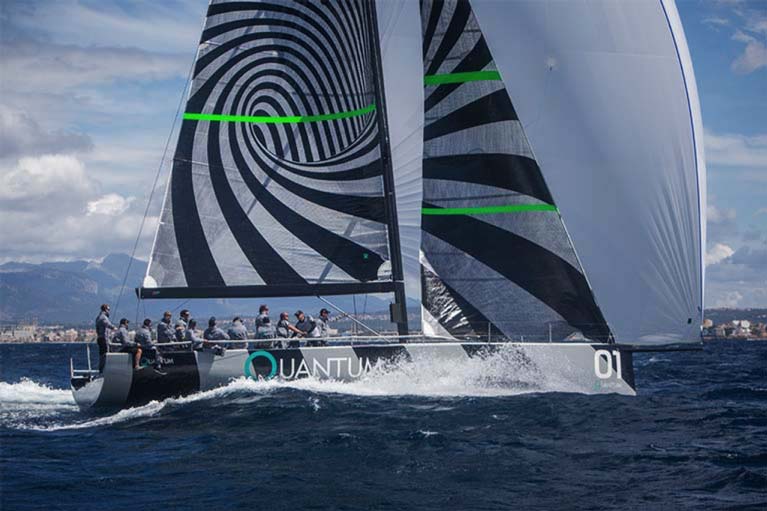 A top TP 52 using Fusion MR Main and headsail
A top TP 52 using Fusion MR Main and headsail
SERVICE AND BACKUP
This is always important and Yannick Lemonnier has been servicing sails in his Galway Loft for over 10 years. Yannick was the Quantum Sails Agent for a number of years and is now back into the Quantum family. Yannick has a 250 Sq. metre Loft with three Machines, which can repair and recut any size sail. They can also manufacture Covers and other canvas products like Dodgers, Biminis etc.
Yannick will cover the West Of Ireland, I will be covering the South and between us, we will cover the East, Midlands and Northern Ireland. Should a client go with us, he will get significant backup, which will include rig tuning and other go-fast requirements.
Ireland now has another proper option for the purchasing of sails, with the arrival of this World Class Quantum brand to Ireland. Come and ask Yannick or me for a quote. You won't be disappointed.
Download the Quantum brochure below
Mark Mansfield [email protected] 087 2506838
Yannick Lemonnier-- [email protected] Tel: 087 628 9854
New Quantum Sails Agents Appointed for Ireland
Quantum Sails International has announced that a new agent for Ireland has been agreed. Four times Olympian, Mark Mansfield will join forces as a sales agent for Quantum Sails, with Yannick Lemonnier from West Sails in Galway.
Mansfield is also J Boats and Grand Soleil agent for Ireland and is well known In Irish sailing through his Olympic and other International sailing campaigns. He is also a Professional sailor and Coach and contributor to Afloat. He was previously an agent for another Irish sailmaker.
Yannick Has been based in Galway as a sailmaker for ten years and has recently moved his loft to a new state-of-the-art 250 sq. metre premises in Oranmore in County Galway. Well known for having competed in five Figaro events and more recently he has been competing in his own Mini Transat yacht in events such as Round Ireland and Dun Laoghaire to Dingle Races.
Mark Chellis, Marketing Global Director, Quantum Sails, was delighted to be on hand at the Dusseldorf boat show when details were announced of the new arrangement. He comments “ We have known Yannick for some years as he previously was our agent, and are now delighted to see him team up with someone of Mark Mansfield’s pedigree. Mark has competed in 3 Olympics using Quantum Sails and understands the standard of Design and expertise that our worldwide team brings. Our TP 52 has consistently been the top performer on the Med Circuit for the last number of Years, winning overall on four occasions. Our sails compete in the Top events worldwide with great results. we are also tightly aligned with Dehler 30 OD, the ClubSwan36 & foilers like American Magic.
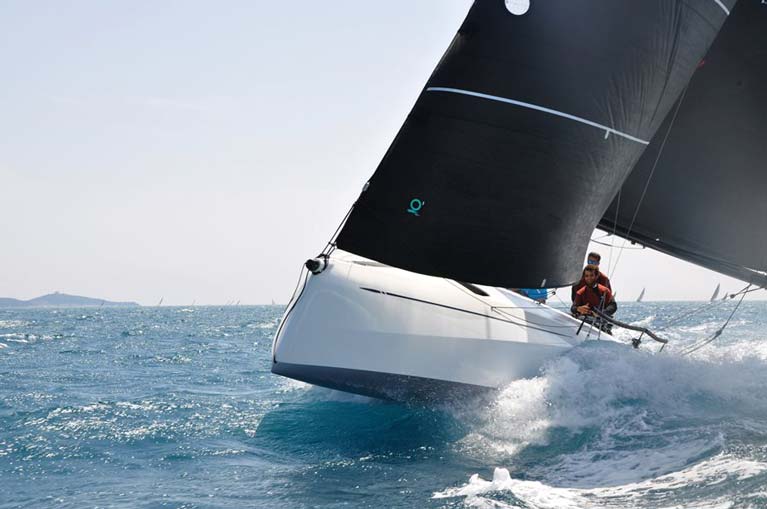 Club Swan 36
Club Swan 36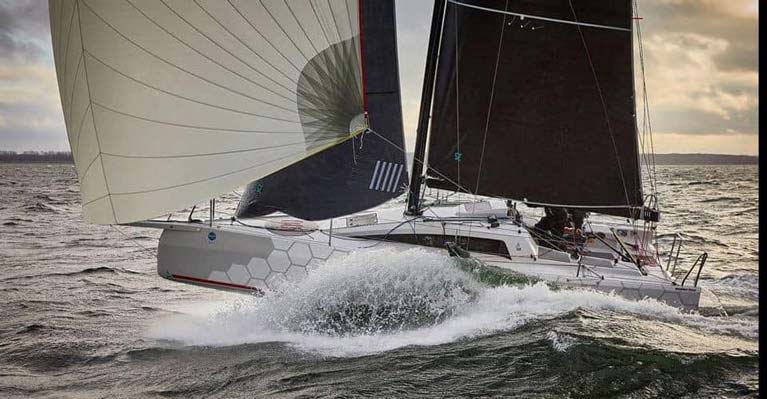 Delher 30 OD
Delher 30 OD
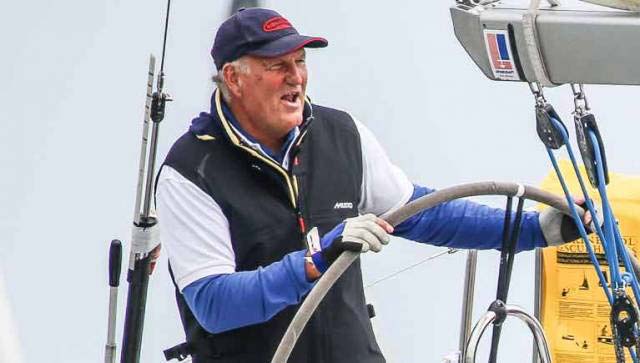 Mark Mansfield
Mark Mansfield
Mark Mansfield comments—“ I am really looking forward to the challenge of helping Quantum Sails become a major player in the Irish market, and now is a good time to bring such a worldwide brand back to the notice of Irish customers. Before going with Quantum, I did an in-depth study on the other available brands and Quantum came out on top for providing quality sails at a competitive pricing structure that will compete very well in Ireland. Yannick is a great offshore and shorthanded sailor and is a proven sailmaker, operating from his new West Sails sail making Loft in Galway. We have the technology and design from The Quantum Group, the service back-up from our own Galway Loft and now the proper, on the ground personnel, to take care of clients all over the country”.
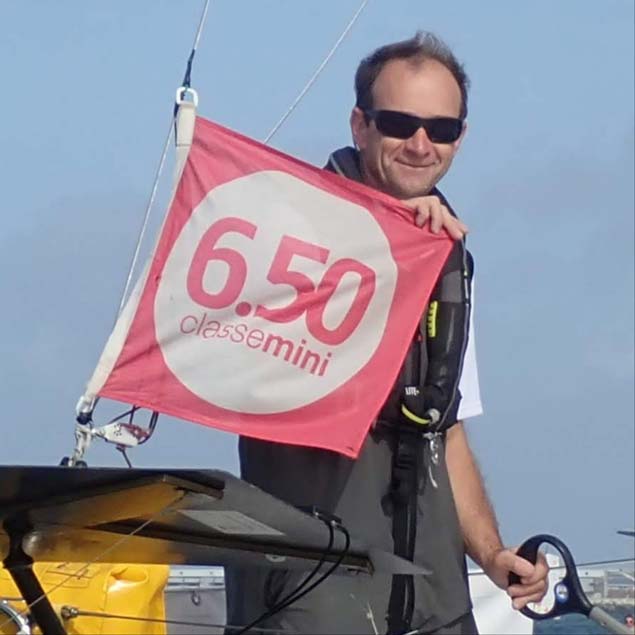 Yannick Lemonnier
Yannick Lemonnier
Yannick Comments—” I am delighted to be back in the Quantum family after a years break with another Sailmaker. It is a new start with 10 years of experience in the background and now look forward to working with Mark, who is well known in Ireland. This is why I decided to work again with Quantum sails which I like very much for its consistent quality, performance and price. It is very easy to work with their top-level designers, other lofts and Class specialist. Joining forces with Mark is giving another dimension to the business, giving access to the East and Southern coasts where Mark is well known.
 New 250 square metre Quantum Sail Loft premises in Galway
New 250 square metre Quantum Sail Loft premises in Galway
Quantum Sails Have a range of brands to suit any sailor, from Top Grand Prix level Fusion membrane sails found on TP 52s right down to Club racing and cruising sails. The range of products can suit any requirement and can adapt to fit the price level of most owners.
Mark and Yannick can be contacted for quotes or other information at:
[email protected] or [email protected] Tel: 087 628 9854
Mark—[email protected] Tel: 087 2506838
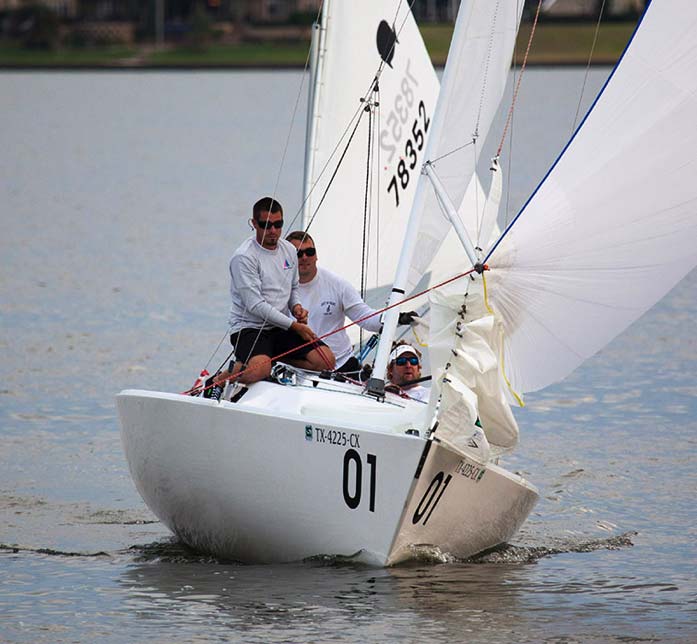
Olympian Mark Mansfield Appointed J Boats & Grand Soleil Agent for Ireland
Key Yachting Ltd has announced that four-time Olympian Mark Mansfield, has been appointed the representative in Ireland for their four ranges; J Boats, Grand Soleil, Nautitech Catamarans, and Tofinou.
Key Yachting is the sole agents for these performance brands in the UK and Ireland and has not had a specific Irish agent for a number of years.
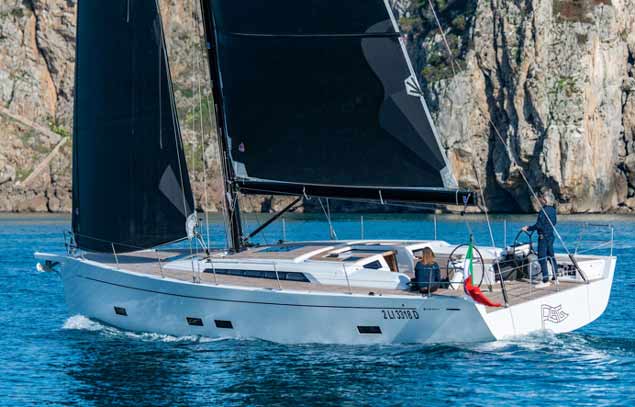 New Grand Soleil 48 Performance
New Grand Soleil 48 Performance
Marie-Claude Heys, MD of Key Yachting said “We are really excited to have Mark join the Key Yachting family. Mark already knows and sails with many of our owners in Ireland, so is perfectly placed to assist them with any technical issues, and of course, help them upgrade their boat when the time comes! Mark is a top sailor and we are hopeful that he will help to sustain the fantastic reputation our J Boats, in particular, have in Ireland.”
J Boats
The premium cruiser-racer range that includes the IRC top-level winner J/112e, the newly launched J/99, and the fastest-growing One Design keelboat in the world, the J/70.
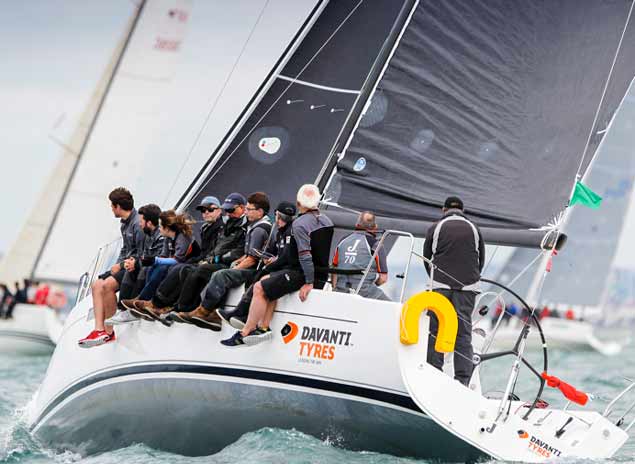 J112e Davanti Tyres
J112e Davanti Tyres
Grand Soleil
A very well known range of top quality Italian produced cruiser-racer and cruising yachts. Recent successes in Ireland on the racing front have come from Frank Whelan’s Grand Soleil 44, Eleuthera which has won nearly everything she has competed in, Nieulargo, the Grand Soleil 40 Owned by Denis Murphy from Royal Cork has also been a top performer, winning both the April and Autumn leagues this year. A number of years ago, the Grand Soleil 43, Quokka, featured on the Winning Irish Commodores Cup Team in 2010. This range combines fast easily driven hulls, with very comfortable cruising interiors.
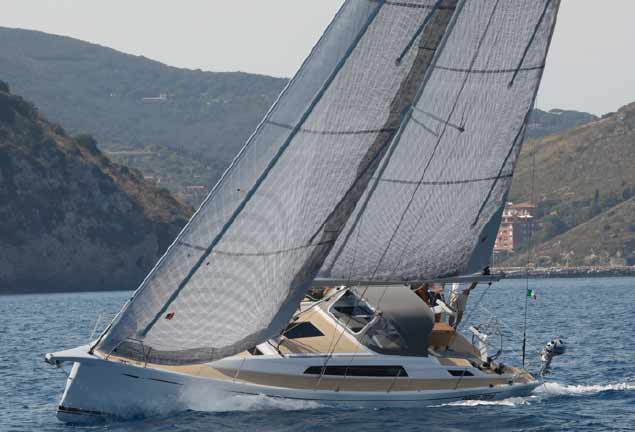 Grand Soleil Long Cruise 42
Grand Soleil Long Cruise 42
Nautitech
The French premium catamaran builder which has recently introduced the Nautitech 46 Flybridge model, which will be exhibited at the January Dusseldorf boat show.
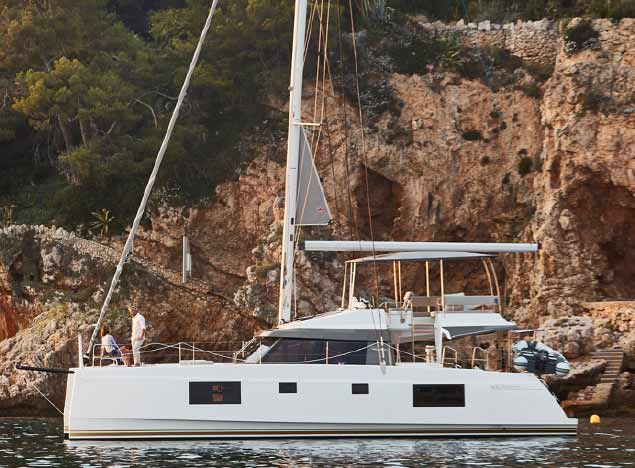 New Nautitech 46 Flybridge
New Nautitech 46 Flybridge
Tofinou
Tofinou Yachts are a brand of top of the range Day sailors and cruiser racers and will also be showing at the Dusseldorf show.
Mark Mansfield
Mark Mansfield is well known in the Irish sailing and marine market. Following 30 years working in the banking sector, he turned sailing professional/sailing coach/consultant five years ago and has had considerable success in that area. Mark is also an agent for UK Sails Ireland.
Mark has completed in four Olympics and has won at virtually every level in sailing, from numerous 1720 titles to European wins in the Star and IRC Europeans, and Irish Champion of Champions. Mark has achieved success at virtually every IRC Regatta around the UK and Ireland including the Scottish Series, UK IRC Champs, Irish IRC Champs, Spi Ouest Regatta, and Dun Laoghaire Regatta.
Mark is a contributor to Afloat and written on many performances and race orientated subjects here
More to follow, but Mark will be on the J Boats and Grand Soleil stands at the Dusseldorf Boat Show from the 18th to the 26th of January. J Boats will be exhibiting the J/70 sportsboat, the J/99 Short Handed IRC Cruiser racer, and the J/112e Cruiser Racer, which is likely the most successful IRC boat over the last number of years in Europe.
Grand Soleil will be exhibiting the new Grand Soleil Long Cruise 42 Cruiser and the 48 Performance, only launched in 2019.
Mark can be contacted at [email protected] and by phone at 00 353 87 2506838.
'Pinging The Start Line' - Should Race Officers Provide Time for This?
Afloat correspondent Mark Mansfield who provided some sailor-focused thoughts for Race Officers on race management in his recent article here has had one of his tips rebutted by the editor of American website, Scuttlebutt.
Scuttlebutt's Craig Leweck who picked up the story rejects Mansfield’s fourth tip covering the recent requirement for race boats to 'ping the line' to set up onboard computers.
"With all due respect to the esteemed 4-time Irish Olympian, I oppose his advice with regard to adjusting start lines says Leweck. "Mansfield states that if a race officer decides to move either the Committee boat or the pin prior to the start, they should allow 5 minutes or so before going into a sequence, as many boats will need to enter the new location into their startline GPS aids like Racegeek or Velocitek pro starts. I say phooey to that, as anything that slows down the running of races is a negative, particularly if it promotes the use of costly tools instead of sailing skill", Leweck argues.
Read Mansfield's full article here.
UK Sailmakers Ireland: Five Top Tips for Buying Sails
Olympic sailor Mark Mansfield who is an agent for UK Sailmakers Ireland offers his five top tips for those looking at buying new sails this year.
1. Correct Size Sails
Make sure the new sails are the correct size. IRC rule changes are happening all the time and good advantages can be had from optimising the sail sizing, sometimes by just a small amount. Make sure you get advice from your sailmakers about what is best. We had one Class One boat this year that ended up with the same size sails as before but dropped two points by changing the shape of their sails a small amount.
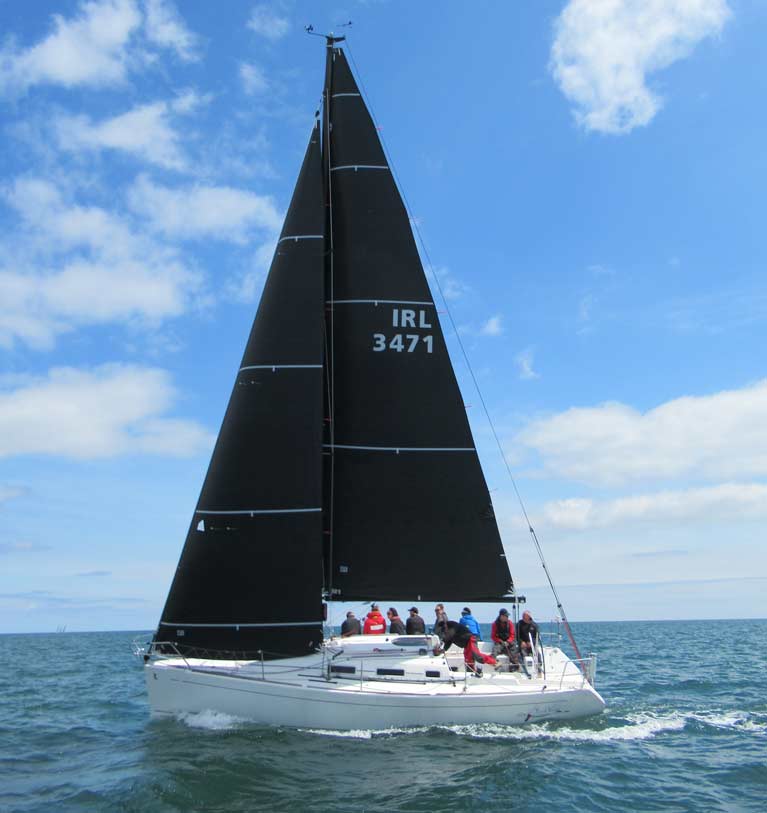 Black Velvet Beneteau 34.7 with her Uni Titanium Main and Headsail. Black Velvet recently converted to non-overlapping headsails
Black Velvet Beneteau 34.7 with her Uni Titanium Main and Headsail. Black Velvet recently converted to non-overlapping headsails
2. Seasonal Discounts
Make sure you take advantage of any discounts that might be available. Autumn is traditionally a quiet time for production facilities and so discounts are offered for orders at that time. At UK Sailmakers, we have just introduced a new discount arrangement. More details here
3. Sailmaker's Knowledge
Make the best use of your Sailmakers. People working with sailmakers have a wealth of knowledge about what makes boats go fast. Whether it is helping you with your rating optimisation, helping you tune your rig or other areas, make use of them. Sometimes this can be added as an included extra in a sails purchase deal.
4. Loft Facilities
Ensure the sailmakers you are thinking of has a proper loft to be able to service and adjust your sails. Ordering from a sailmaker with no proper loft facilities means adjustments or repairs are extremely difficult to organise. We recently had a customer who twisted his Code 0 cable and was unable to untwist it himself. It went down to our loft in Crosshaven where the 17-metre sail was hung up, untangled and refitted. This would be very difficult to achieve without proper facilities.
5. Sails to Suit Requirements
Make sure you are being quoted the material in the sails that suit your requirements and not some lower-tech and cheaper material that looks fancy but actually will stretch very quickly and not last long. For racing boats over 30 foot or even a bit smaller, the go-to material for quite a few years for low stretch is Carbon. The problem with not having Carbon in high load sails is if you exceed their normal wind range, they will eventually stretch, and once that has happened, you end up with turned in leeches and baggy sails. They will not last competitively for the same number of years as Carbon-reinforced sails.
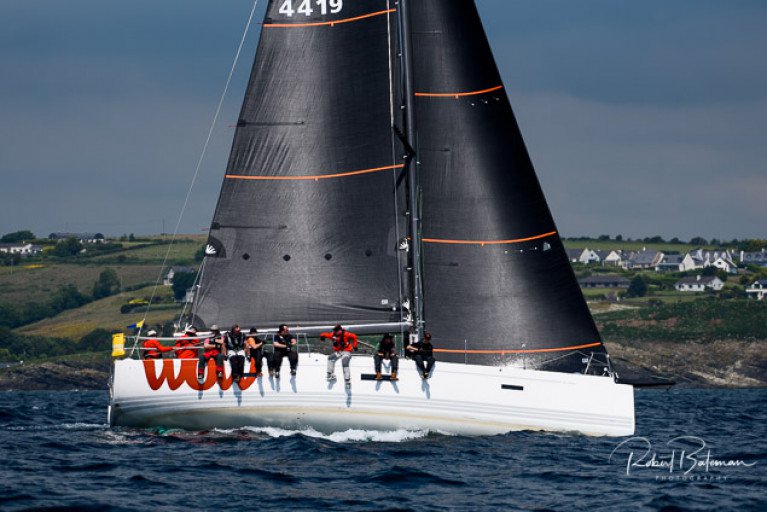 George Sisk's new X Yachts XP 44 Wow on way to winning the 2019 Sovereign's Cup with her Carbon Uni Titanium Main and Headsail Photo: Bob Bateman
George Sisk's new X Yachts XP 44 Wow on way to winning the 2019 Sovereign's Cup with her Carbon Uni Titanium Main and Headsail Photo: Bob Bateman
So, Why Carbon?
A quick history lesson on sail materials.
Up to the ’70s, nearly all sails were made from Dacron (Polyester) and were 'crosscut'. Fairly cheap, stretchy material, but lasted a long time.
In the late ’70s, new materials such as Mylar emerged with much less stretch and were used for quite a few years.
In the early ’80s, Kevlar became the go-to material. Originally used for bulletproof vests, it had good stretch resistance but was more expensive. The first Kevlar sail I ever sailed with was on Moonduster in 1981, her first year, when she did the Admiral's cup. Kevlar sails in those days were still crosscut.
In about 1982, tri-radial sails, using a combination of Mylar in the low stretch areas and Kevlar in the high stretch areas(such as the leech) changed the way sails were made forever. Kevlar, however, has low UV protection and stretches after a lot of flogging and wear.
In the early 2000s, Carbon was introduced to sails and this was another game-changer. Much less resistant to UV damage and significantly less stretch. It has become the option of choice for the racing community. It is more expensive, however, which is why some sailmakers when in a competitive situation, sell sails without Carbon.
At UK Sailmakers, our Race sails (X drive Carbon, Titanium and Uni Titanium) are all Carbon-reinforced sails. The latter two options are moulded sails.
The graph below shows the strength differences
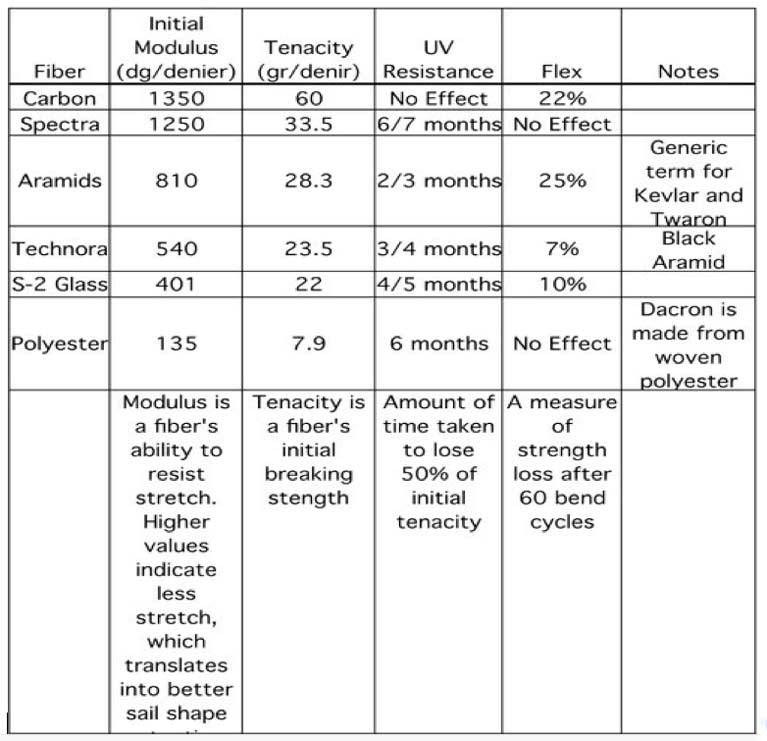
If you are buying new sails, here is what you should be looking at:
- Fully Cruising - Dacron is fine
- Cruising and occasional races on Echo - Dacron is still fine
- Racing mainly and occasional cruising - Carbon-reinforced sails such as UK Sailmakers 'X drive Carbon'
- Racing mainly, club level - Carbon-reinforced sails such as 'X drive Carbon'
#ICRA - All three boats on the podium at Cork Week last month demonstrate the benefits of not only rig tuning but also focused coaching, according to Mark Mansfield.
The UK Sailmakers racing consultant and four-time Olympian, who shared a series of ‘how to’ articles on Afloat.ie earlier this year, was responsible for tuning the rigs of all three boats on the podium in the 2018 Beaufort Cup.
Two of the top three also has coaching sessions with Mansfield — including the Beaufort Cup winning J109, Joker II, which spent a day at his Cork base before the Defence Forces crew under July’s Sailor of the Month Barry Byrne sailed to second place in the Round Ireland.
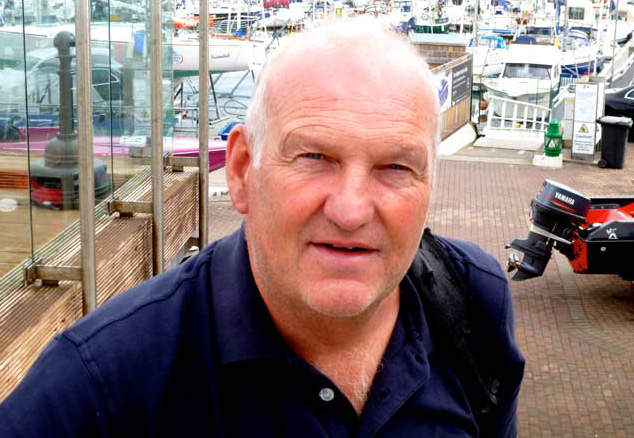 Mark Mansfield is coaching Irish cruiser racer campaigns Photo: W M Nixon
Mark Mansfield is coaching Irish cruiser racer campaigns Photo: W M Nixon
A typical tune-up and coaching day, Mansfield says, begins with tuning the rig onshore, then fine-tuning on the water before a helm and crew coaching session that typically involves straight-line speed practice and changing gear in varying wind conditions, as well as sail-handling techniques.
What might seem fairly straight forward for the experienced helm or crew member is the kind of revision that makes the difference between a respectable showing and a place on the podium.
Class 3 at Cork Week was another testament to that, as Mansfield had input into all three podium finishers. In particular, Ronan Downing’s half tonner Miss Whiplash outperformed Johnny Swann’s Harmony despite arriving in Ireland only a week before Cork Week — thanks, suggests Mansfield, to a focused coaching evening in the run-up to the regatta.
More recently, Mansfield brought his expertise to Cowes Week in the Etchells 22 Class, and this week he will join John Maybury’s Joker II at the ICRA Cruiser Nationals in Galway.
Mansfield is available for professional rig tuning, coaching or sailing on any boat. For more details contact [email protected]
Tuning a Fractional Mast & Rig
People seem to think that tuning a fractional rig is very difficult. In reality, it is not that hard as Mark Mansfield, Professional sailor and racing consultant/agent for UK sails Ireland, describes below in the first part of a series of 'How To' articles.
There are four fairly straightforward areas to do and once you go through these is a systematic manner it normally works out fairly well first time. These four areas are:
- Make sure the rig is in the centre of the boat
- Make sure the rake is correct
- Get the prebend right
- Tighten the shrouds to the correct level
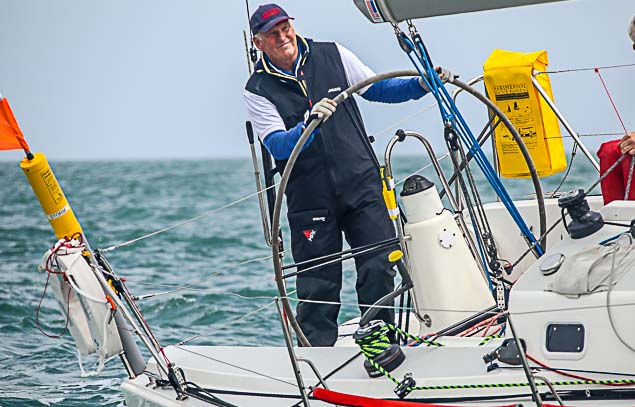 Article author Mark Mansfield, Professional sailor and racing consultant/agent for UK sailmakers Ireland Photo: Afloat.ie
Article author Mark Mansfield, Professional sailor and racing consultant/agent for UK sailmakers Ireland Photo: Afloat.ie
I will go through these four in detail in a moment, but whether it is a single spreader, double spreader or triple spreader mast, the system to get it right is the same, just a bit more work with the extra spreaders and shrouds. Also, it is the same whether it is a one design mast like a 1720, Etchells etc. or whether it is a one off custom boat. Most one design classes will have a tuning guide prepared often by a sailmaker and these are certainly a good base point. However, even if you have one of these tuning guides, much of what I will be going through still it very relevant. Over the years I have tuned everything from Admirals cup 45 footers, to Olympic Stars, to Figaro offshore boats to 1720’s, Etchells, Commodores Cup Boats, J109’s and a host of others and though there are small differences between them, the basics remain the same. So let’s go through the four headings above.
CENTRALISE THE RIG
It sounds a very basic and simple thing but it is amazing how many masts are over to one side more than the other. I am taking it that the mast step and the mast gate are in the center (as most are) but if you find having done all the items I mention, that the mast is still not setting up straight, then these should be measured and checked. OK, first thing is to loosen off all the shrouds a good bit until they are relatively loose. Then get a heavyish weight, like a large bucket of water, or a full diesel can and attach it to the Jib halyard. We will be using this to measure from side to side. It is important that you do not use the main halyard as if there is a bit of a bend in the tip, the main halyard will end up over to one side. The jib halyard is where the hounds are and if you can get that point in the center, all the remaining parts of the mast will line up.
Hang the heavy can (attached to the jib halyard) over the side of the boat ensuring that it is not being deflected by the stanchions or guard wires. Mark on this halyard with tape near the shrouds where the rope disappears over the deck. Then bring the halyard around to the other side and see if this tape mark is in the same place, when measured at a similar point. If it is not then you need to loosen the outer shroud on one side and tighten the outer shroud on the other until they are equal. You may need to do this a few times but it is worth the effort.
Now temporarily tighten the outer shrouds nearly back to where they were before you started. Looking up the mast track from behind the mast, tighten up the diagonal shrouds on both sides to ensure the sideways bend in eliminated. Start at the upper diagonal shrouds first, if you have more that one set of spreaders, them move downwards to the lower diagonal shrouds. Once you have the mast looking fairly straight, now we turn our attention to getting the correct mast rake.
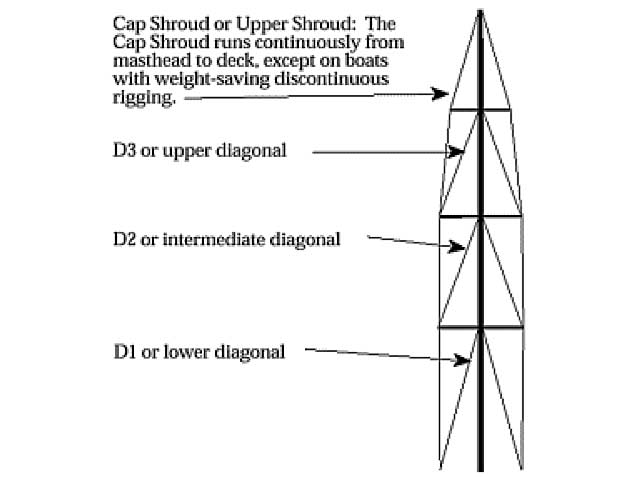 Looking up the mast track from behind the mast, tighten up the diagonal shrouds on both sides to ensure the sideways bend in eliminated
Looking up the mast track from behind the mast, tighten up the diagonal shrouds on both sides to ensure the sideways bend in eliminated
MAST RAKE
Most modern boats are best set up to about 2.5 to 3 degrees of rake. There are exceptions with some boats only needing one degree and others wanting as much as five degrees. However, the vast majority of boats favor around 2.5 degrees and their keel positions and rig plans are designed around this figure. To measure and adjust your rake, again you will need the bucket of water or other heavy weight. This time hang it from the main halyard until it hangs just below the boom. Ensure the weight aboard the boat is in its normal racing position and get all the crew off the boat. Tighten the backstay to a just taut position. Wait for the bucket to settle and mark where the halyard hits the side of the boom. If the rig is at 2.5 degrees of rake the distance from the back of the mast, measured just above the gooseneck should be circa 4.5% of your P measurement which you will get from your IRC cert. So take a J 109 with an approx. P measurement of 13 metres, 4.5% of this would be 585mm. If your bucket is hanging back further than this, then you need to bring the mast forward by tightening your forestay bottlescrew. If your bucket is hanging closer to the mast than that, then the forestay bottlescrew will need to be loosened. Always ensure you adjust the figures if the main halyard exits to the top of the mast further aft than the main track.
MAST PREBEND & TENSION
OK, So we have the mast now in the middle with the correct rake. Next step is to tighten the shrouds to the correct levels, which should in turn put prebend into the mast. Most sails are cut for a slightly prebent mast with about 1% of P as a decent guide. So, with a J109 with an approx. 13-metre P measurement that means about 130mm of prebend. To measure this, again take your main halyard, attach it to your gooseneck and tighten it hard. Push the halyard against the mast track and look up to see what is the max this halyard is positioned behind the middle of the mast. In the above J109 mast, that should be circa 130mm. If it is more then the diagonal shrouds need to be tightened more to straighten the mast. If it is less then the diagonal shrouds need to be eased. Always remember this is based on your outer (cap) shroud being up to full tension. As you tighten the outer shroud, the mast will likely compress and this will cause bend.
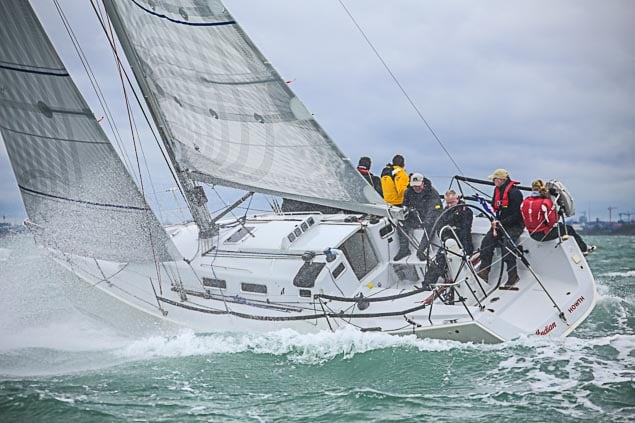 Most modern boats are best set up to about 2.5 to 3 degrees of rake Photo: Afloat.ie
Most modern boats are best set up to about 2.5 to 3 degrees of rake Photo: Afloat.ie
Final tuning of a mast always needs to be done out on the water, preferably with about 12 to 15 knots of wind, with a few bodies on the side. As a general rule the correct tension of the shrouds would be when they just come slack to leeward. If when you go out the leeward shrouds are still bar tight, then you need to ease them a little on both sides. If, as is more likely, the shrouds are too loose, then they need to be tightened, a little on both sides. As the breeze gets stronger it will be difficult to get the shrouds so tight that the leeward shrouds are always hard, especially with an aluminum mast. What happens is as you increase the tension in stronger winds, the mast compresses accordingly and the leeward shrouds stay a bit slack. With a carbon mast, it may be possible however to get the leeward shrouds snug as carbon masts generally bend less from side to side. Getting each individual shroud at the correct tightness level will require quite a few runs side to side, looking up the mast track, trying to see which area is not straight and then adjusting an individual shroud and trying again. Even when the mast is straight, you my find then that there is too much prebend which might necessitate further adjustments to the mast, or may even signal that a small luffround adjustment is needed.
I will be doing a follow-on article on this in a few weeks, which will deal with changing gears on the race course from light winds, right up to very strong winds. For many, finding one decent setting may be what they are looking for, say a medium setting, and then prefer to lock everything off at that stage. Others will want to adjust the rig every couple of knots to try and get that last fraction of speed out of it.
Mark Mansfield—Professional Sailor and racing Consultant/Agent for UK sails Ireland.
e mail—[email protected]
UK Sailmakers, in conjunction with the Irish Cruiser Racing Association and Afloat.ie, will be publishing a series of knowledge sharing and how-to articles for the 2018 season.




























